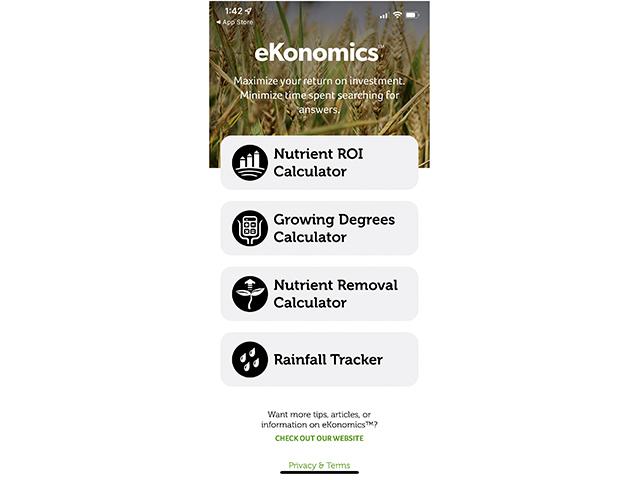Ask the Agronomist
Save Money With Enhanced Efficiency Fertilizer
ADVERTORIAL
Optimizing returns on every dollar spent on fertilizer and crop nutrition holds the key to profitable crop production. Ask the Agronomist, brought to you by eKonomics, provides crucial nutrient management answers as you prepare for the 2022 growing season.
Q: As farmers look to reduce fertilizer costs for 2022, why should they examine EEFs (enhanced efficiency fertilizers)?
Mike Howell: With nitrogen prices around three times higher than last year, it becomes critical to protect that investment and not let losses from the environment remove nutrients needed for plant uptake. Since nitrogen rates can't be cut without impacting yield, shifting to EEF products that protect nitrogen longer can add fertilizer efficiency.
If you compare the price of urea to the polymer-coated products, it's the urea that's actually going up. The cost of protecting that urea stays about the same with EEF products.
Q: Can you explain EEFs and the different types?
Howell: The different forms of EEFs break into three groups of products:
P[L1] D[0x0] M[300x250] OOP[F] ADUNIT[] T[]
1. Inhibitor and stabilizer fertilizers. These products reduce nitrogen loss by slowing down the conversion of nitrogen into forms that can be lost. However, they are not the slow-release products that many people think, as they only protect nitrogen for a few days up to a few weeks, depending on the product.
2. Uncoated slowly available fertilizers. Only a few of these products are used that are uncoated and naturally release nitrogen slowly over time.
3. Polymer-coated fertilizers. These are referred to as controlled-release products as they don't break down. Instead, a polymer membrane surrounds the nitrogen. As water goes through the membrane, it dissolves and slowly releases that nitrogen based on soil temperature. So as the environment warms, more nitrogen is released for crop uptake. The beauty of these products is that they protect against all three forms of nitrogen loss -- volatilization, leaching and denitrification -- for a period of 70 to 90 days.
Q: Why are EEFs a good choice for farmers when fertilizer prices are high?
Howell: The correct form of EEFs in a field can increase crop nutrient availability, leading to a more significant economic impact on a farm's bottom line. For example, if a farmer decides to broadcast urea on the soil surface, research shows nitrogen losses as high as 50% due to volatilization under the right conditions. We need to do everything we can to protect that nitrogen investment.
Q: Why should farmers avoid cutting fertilizer rates, even when prices are high?
Howell: Any nitrogen we lose or do not apply is a failed investment in nitrogen. But that's not the bad news. When we lose nitrogen, we lose yield potential. And yield is what pays the bills. That's why we must do everything we can to keep yields up, especially with higher commodity prices.
Cutting fertilizer rates proves the point driven home in Liebig's Law of the minimum. It states that the nutrient or the production component that is the most limiting is where you're going to suffer initial yield loss. That's why we need to fix these limiting factors.
Nitrogen is just one nutrient. Without all of the nutrients in the right proportion, we're not going to make a high-yielding crop. Conduct a soil test and ensure all nutrients are where they need to be going into the season.
Q: With spring around the corner, what EEF fertilizers could help improve a crop?
Howell: Growers should examine their fields this spring to determine what types of nitrogen loss they face. If you're dealing with a leaching loss, a stabilizer product will work well. If you're looking at volatilization, one of the denitrifiers could help protect that nitrogen for several weeks. If you're looking at three different forms of nitrogen loss, that's where a polymer-coated product can help growers get the most bang for their buck, protecting nitrogen for the longest time period against all forms of loss.
Q: What's a good resource for farmers to examine more details on EEFs?
Howell: The best resource is our Nutrien eKonomics website (nutrien-ekonomics.com) or our smartphone app. Along with the web-based ROI tools, you'll find a wealth of knowledge and information. It includes information in a variety of areas such as: research, crop guides, soil management, nutrient science, news articles, geographic nutrient trends, agronomic ideas and insight from farmers and experts. You'll also find webinars and an academic section that allows the user to ask agronomists and other experts questions.
**
For More Information:
-- Visit Nutrien-eKonomics.com for news and fertility management information. It also contains valuable tools like a rainfall tracker and Growing Degree Day calculator to help farmers assess possible fertility loss and plant development needs.
[PF_0222]
(c) Copyright 2022 DTN, LLC. All rights reserved.




